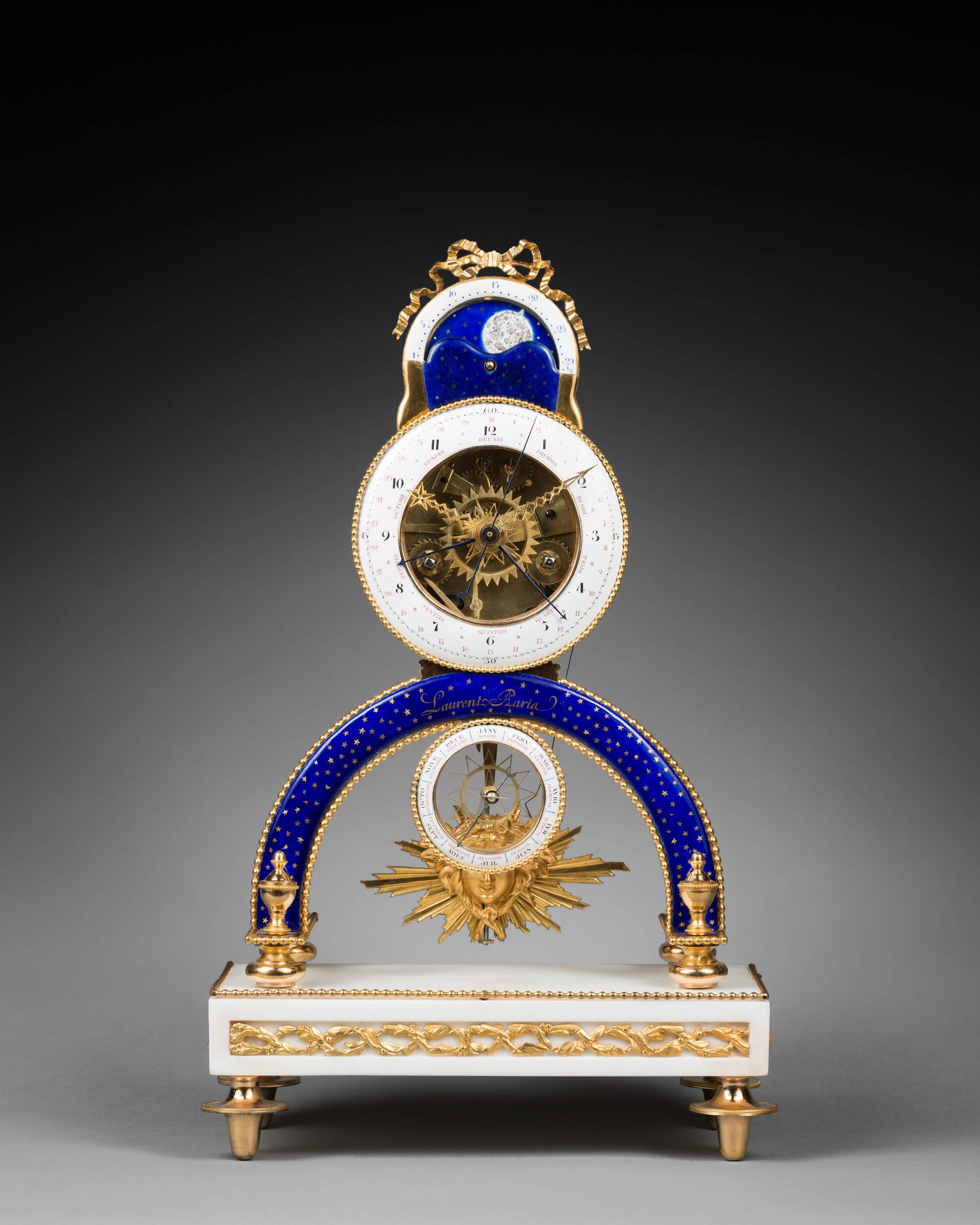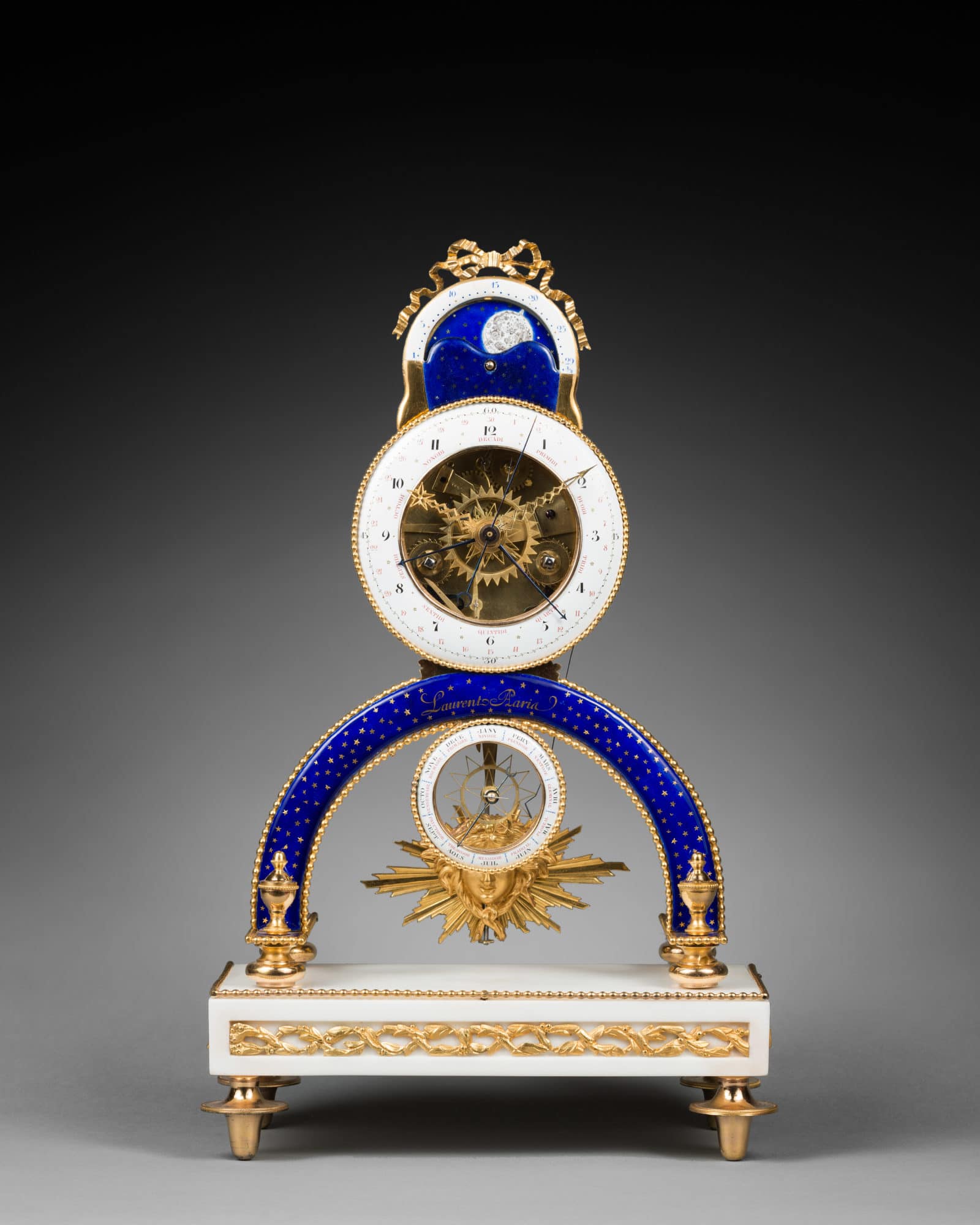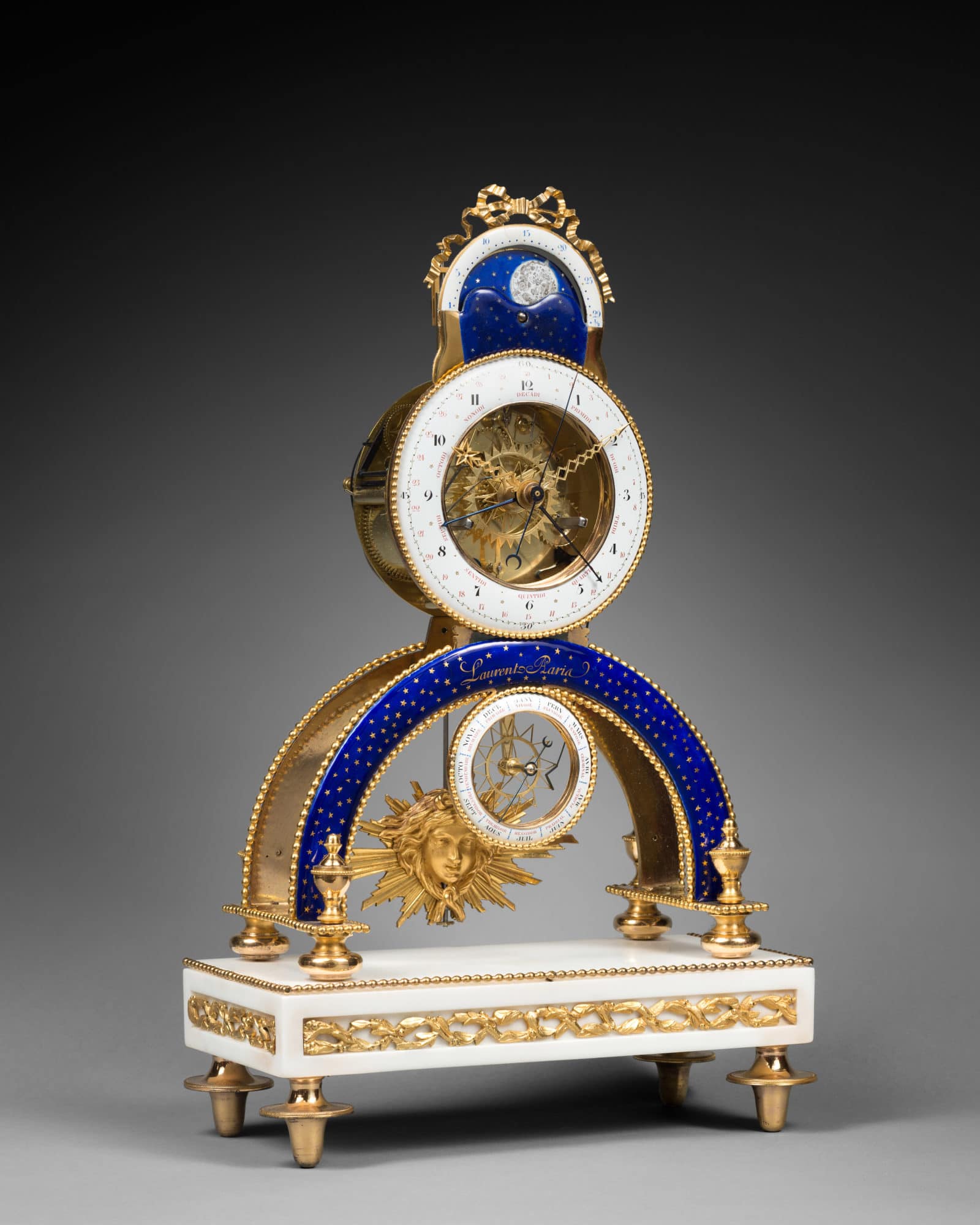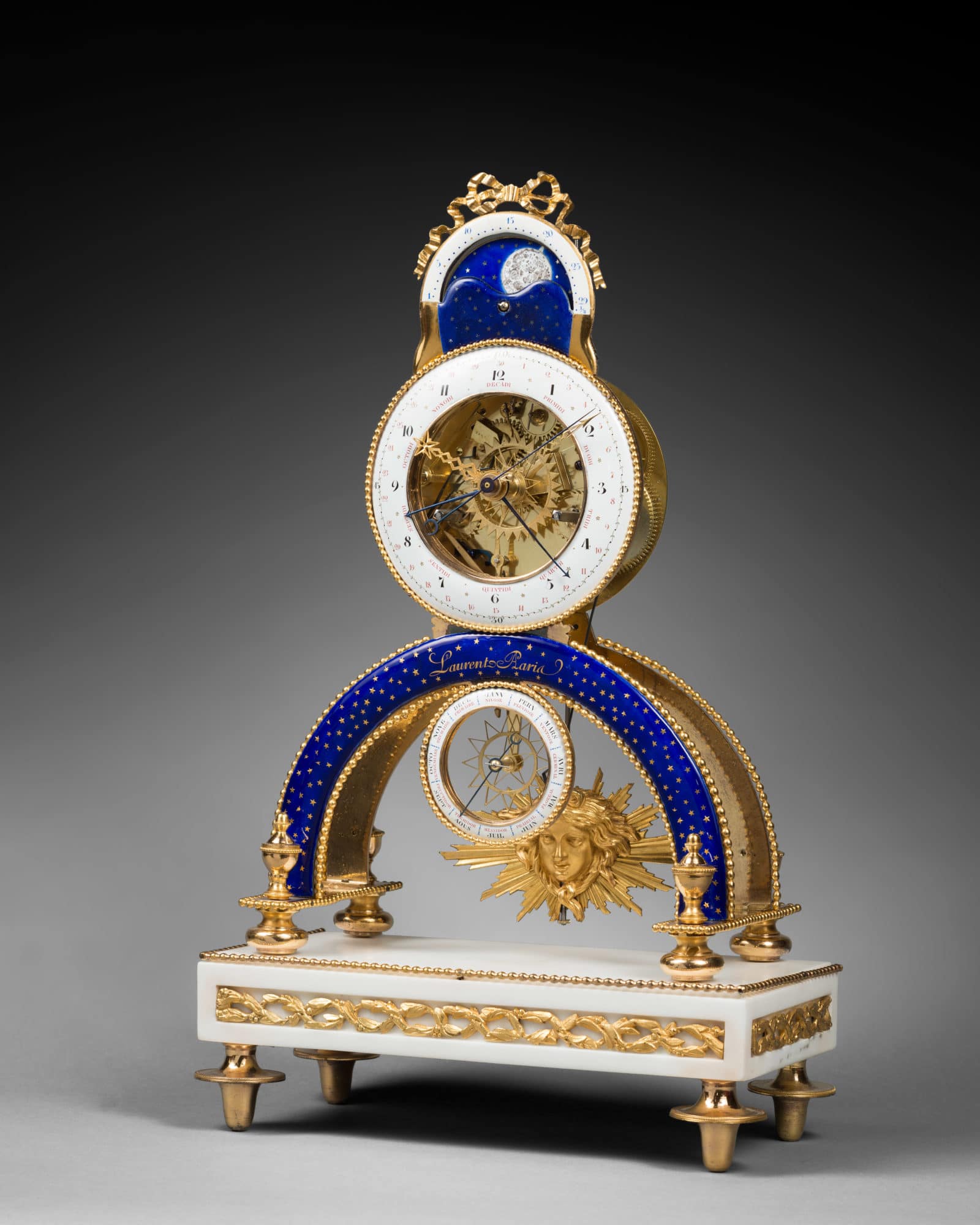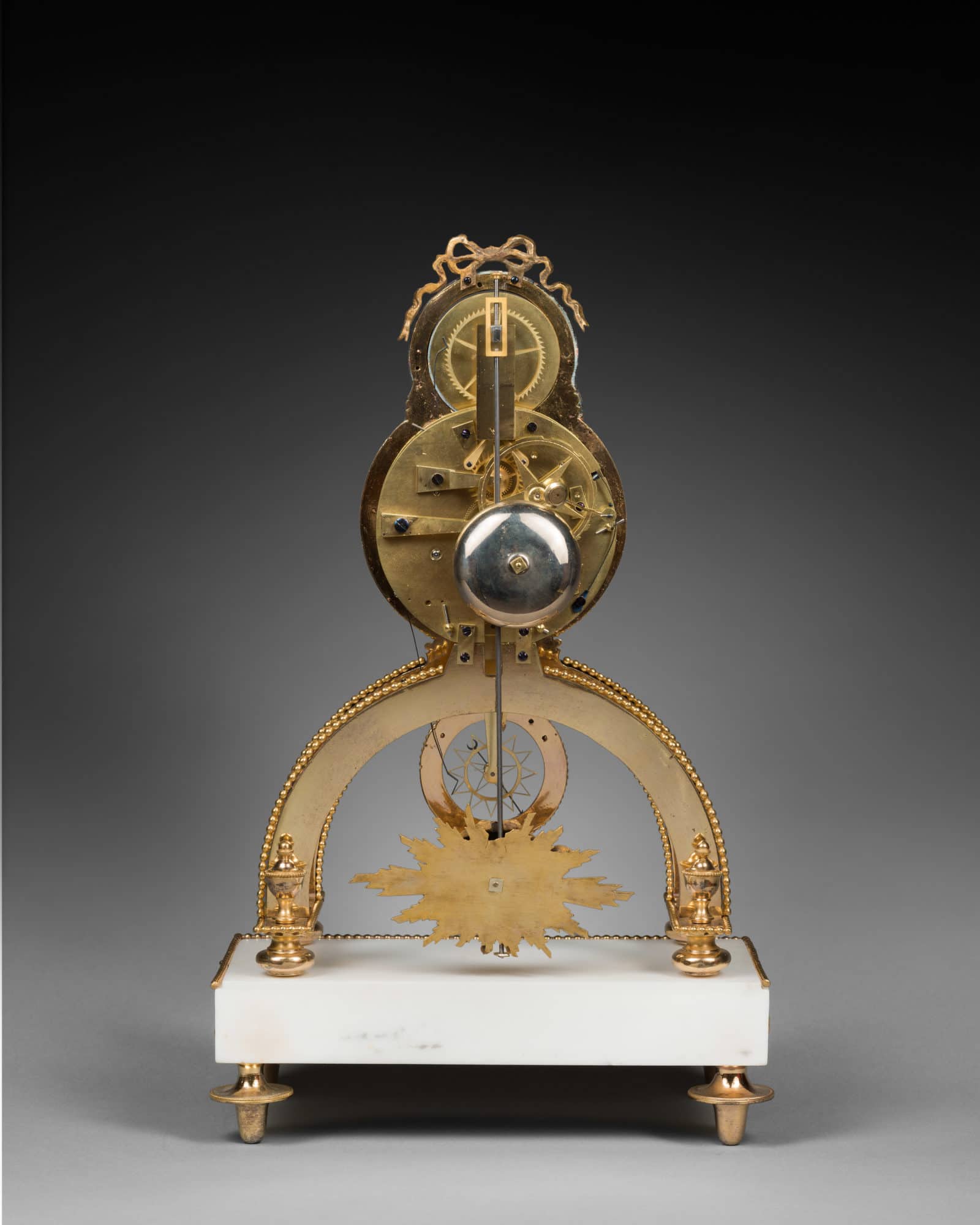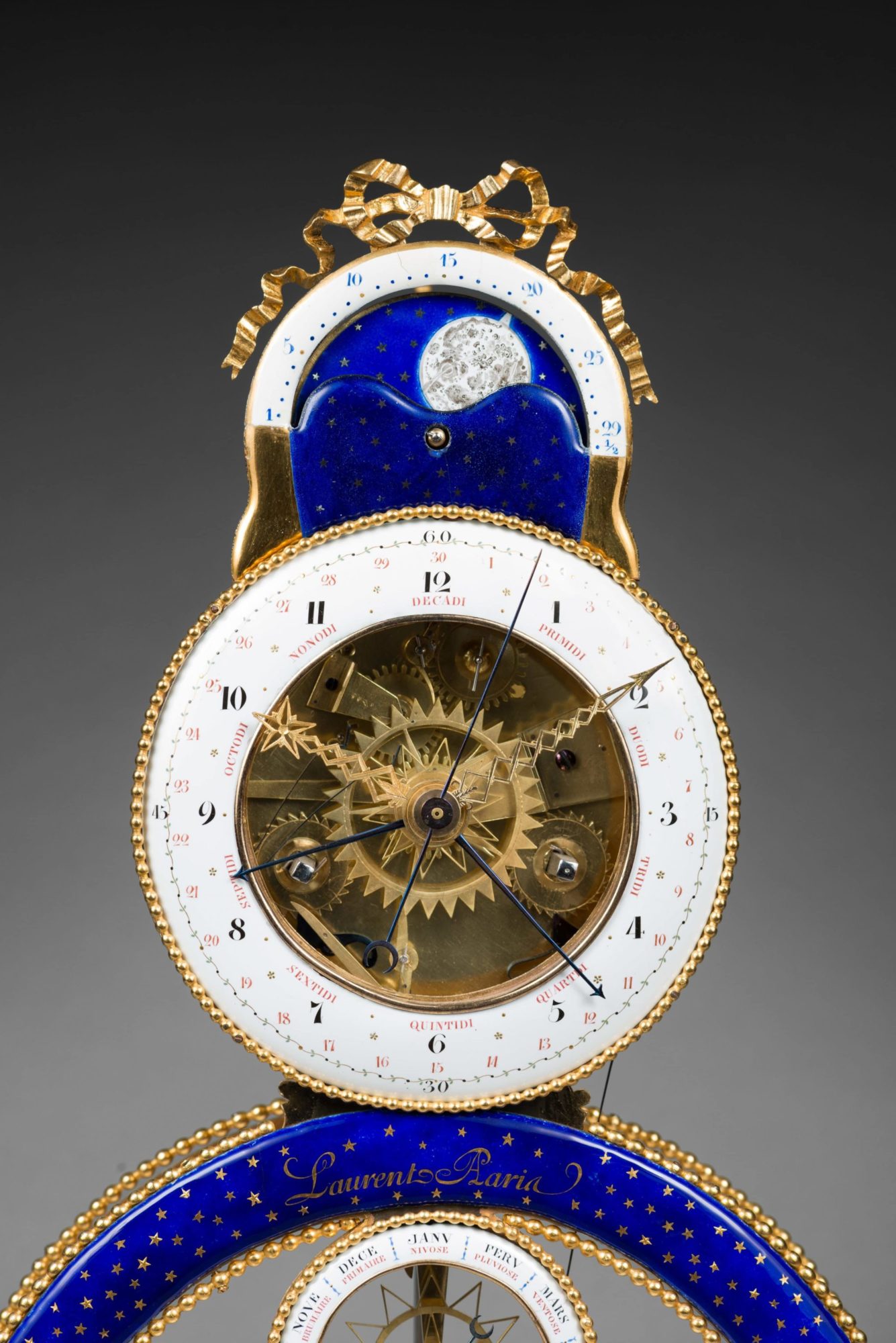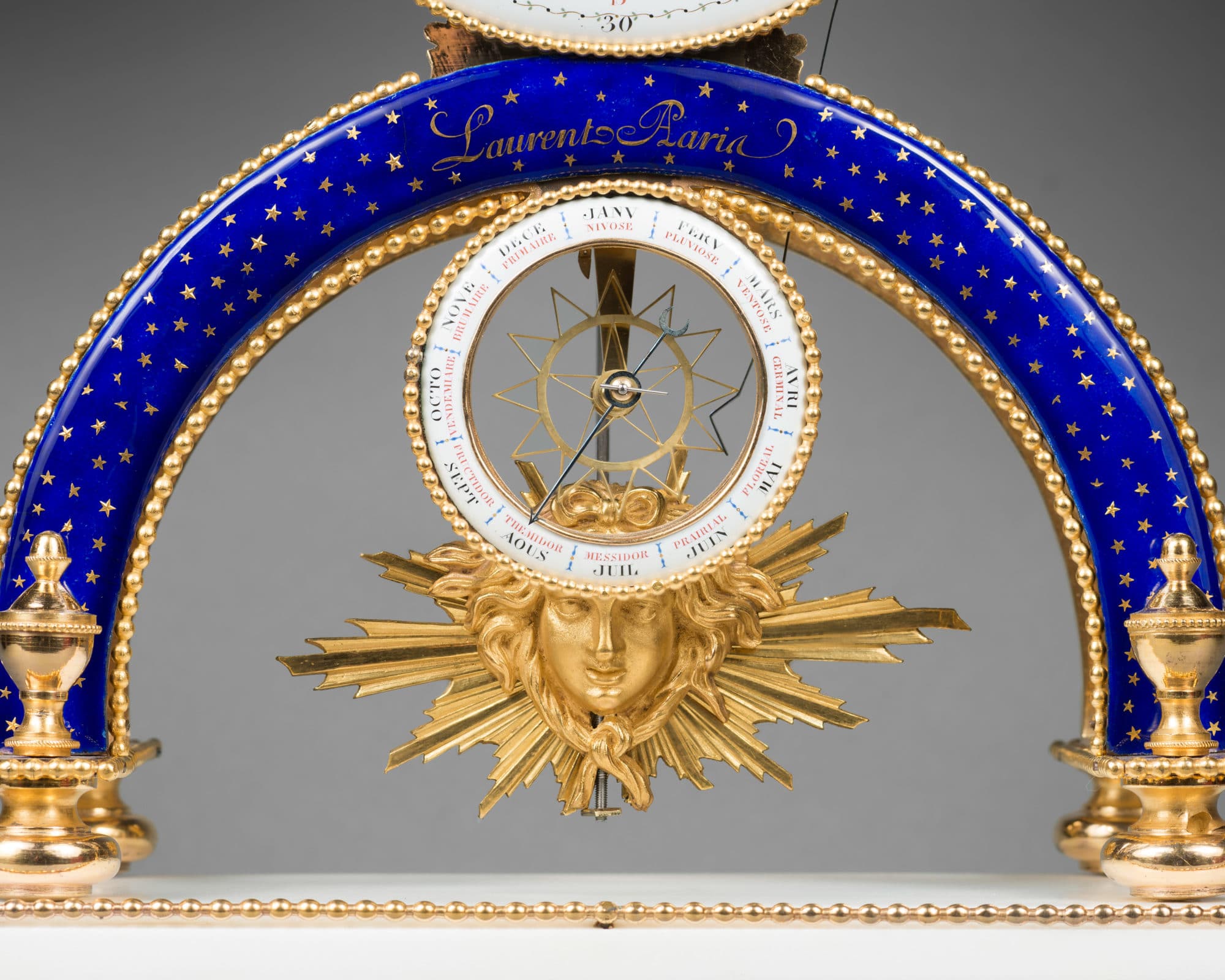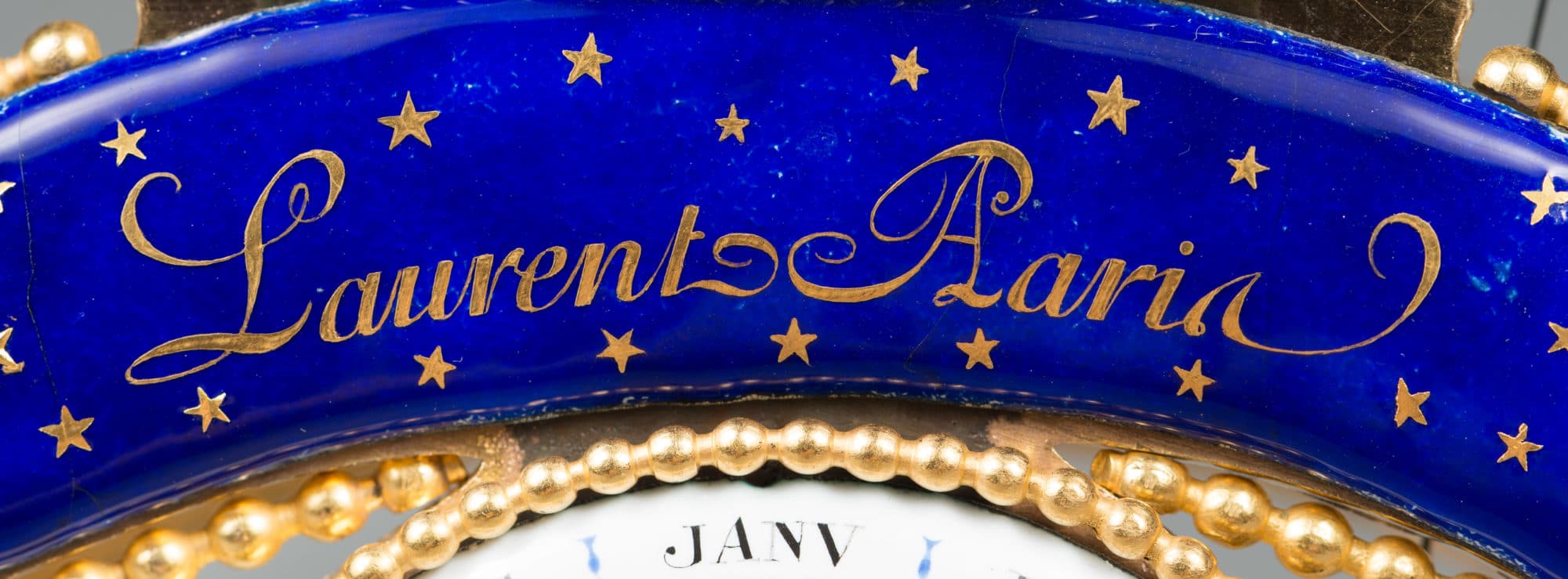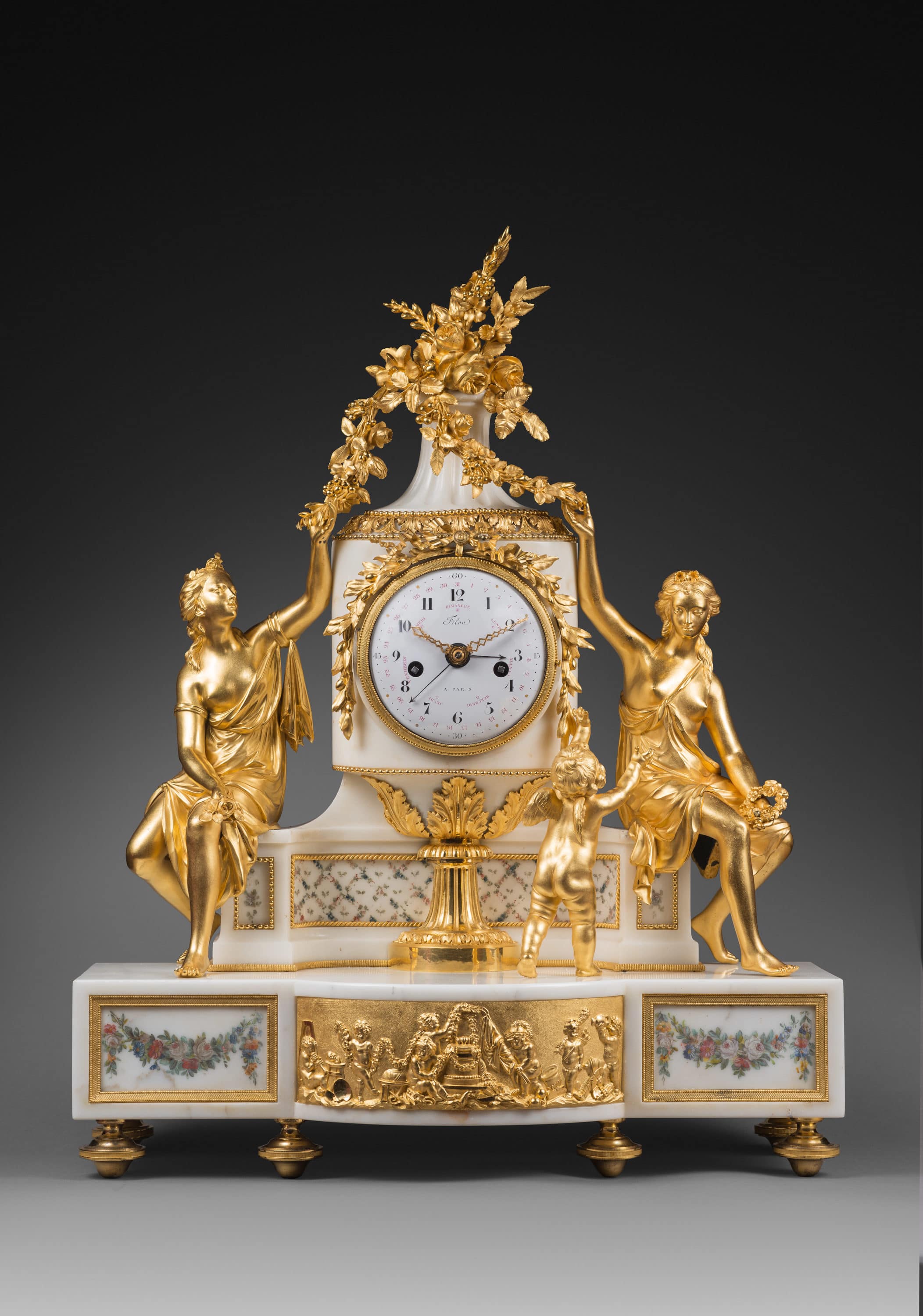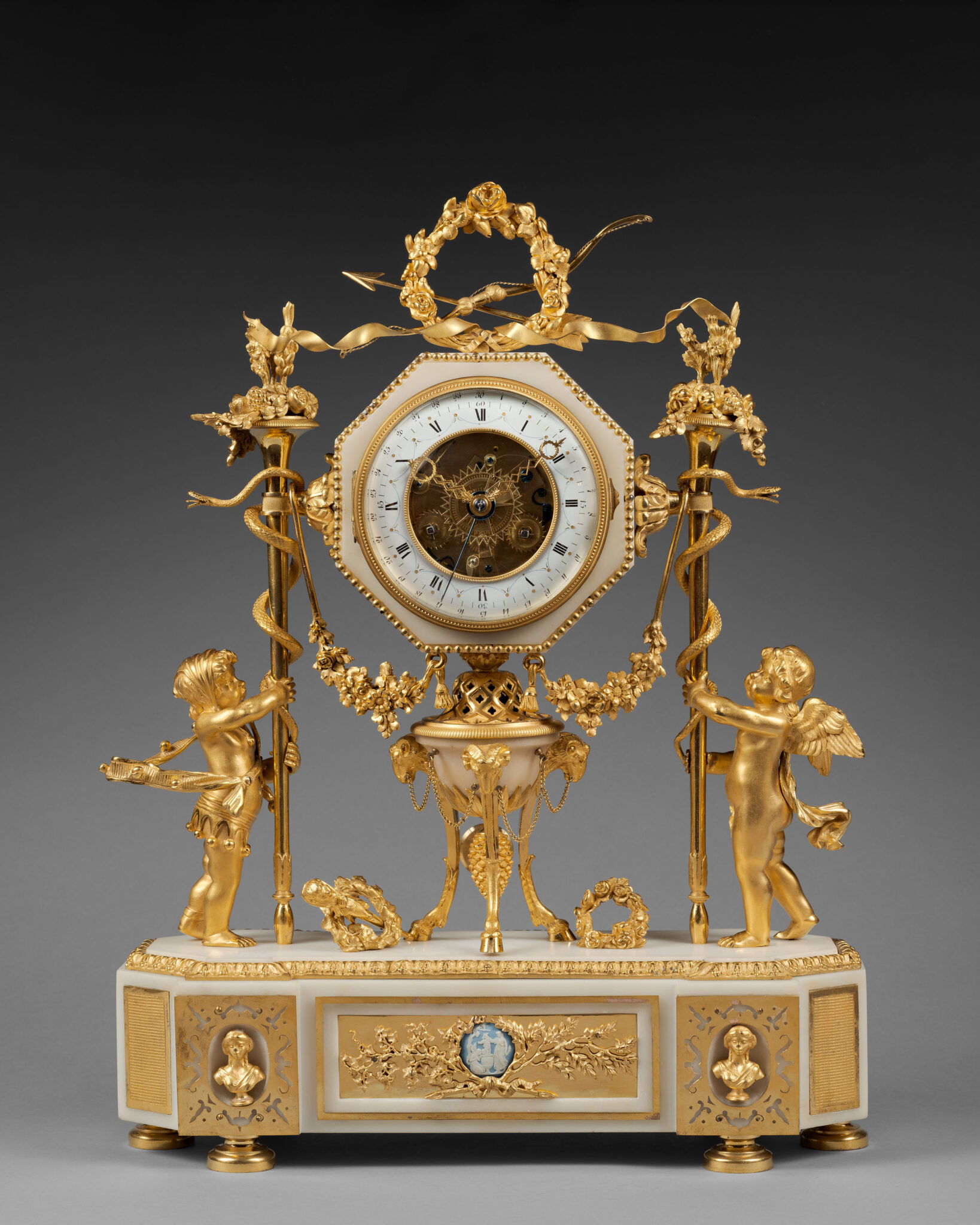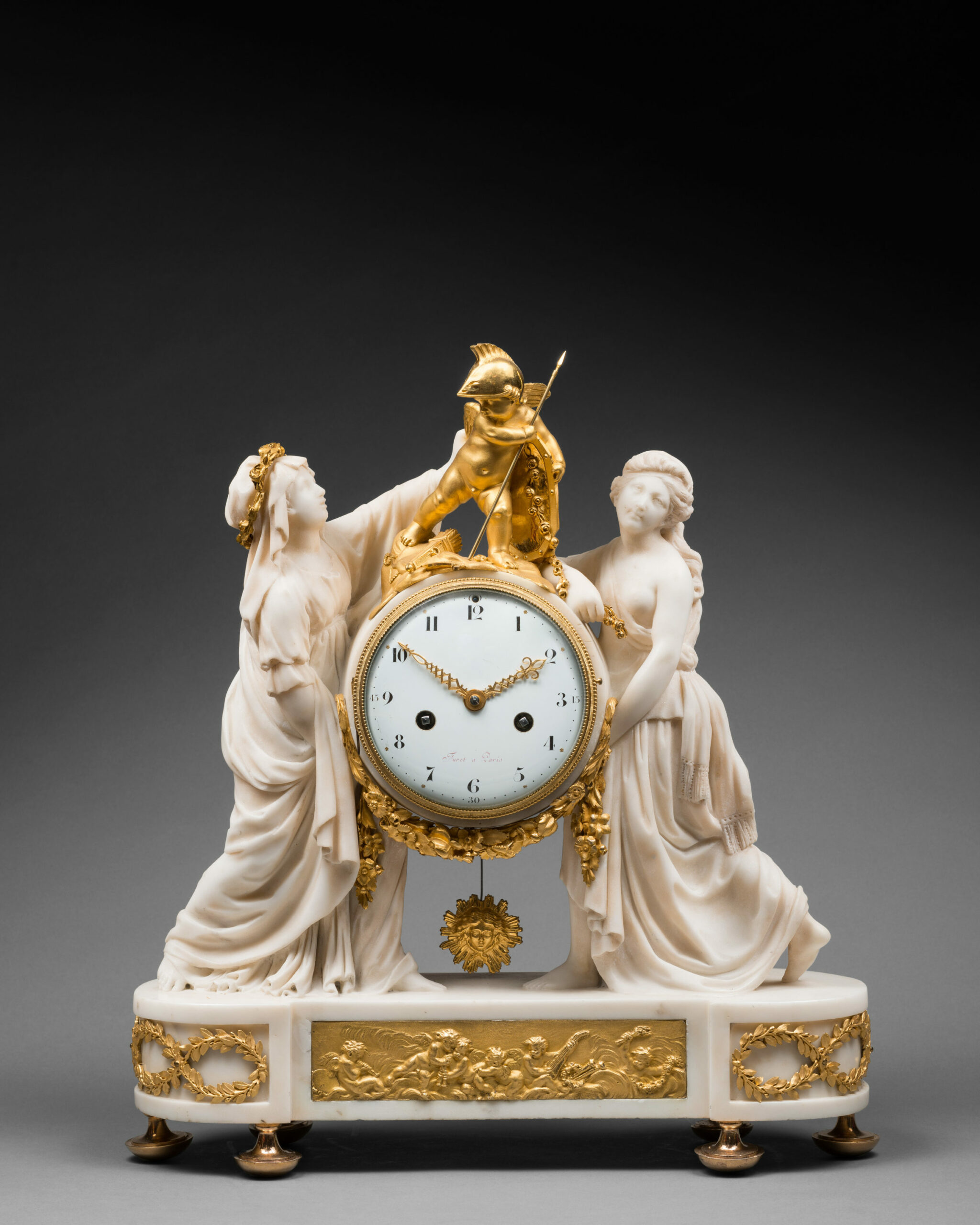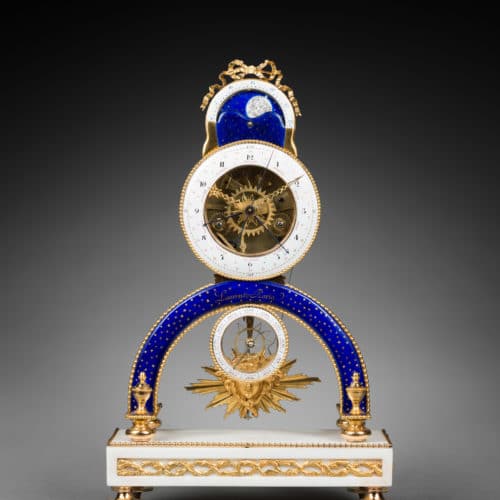Gilt Bronze, Enamel and Marble Skeleton Clock with Revolutionary Calendar
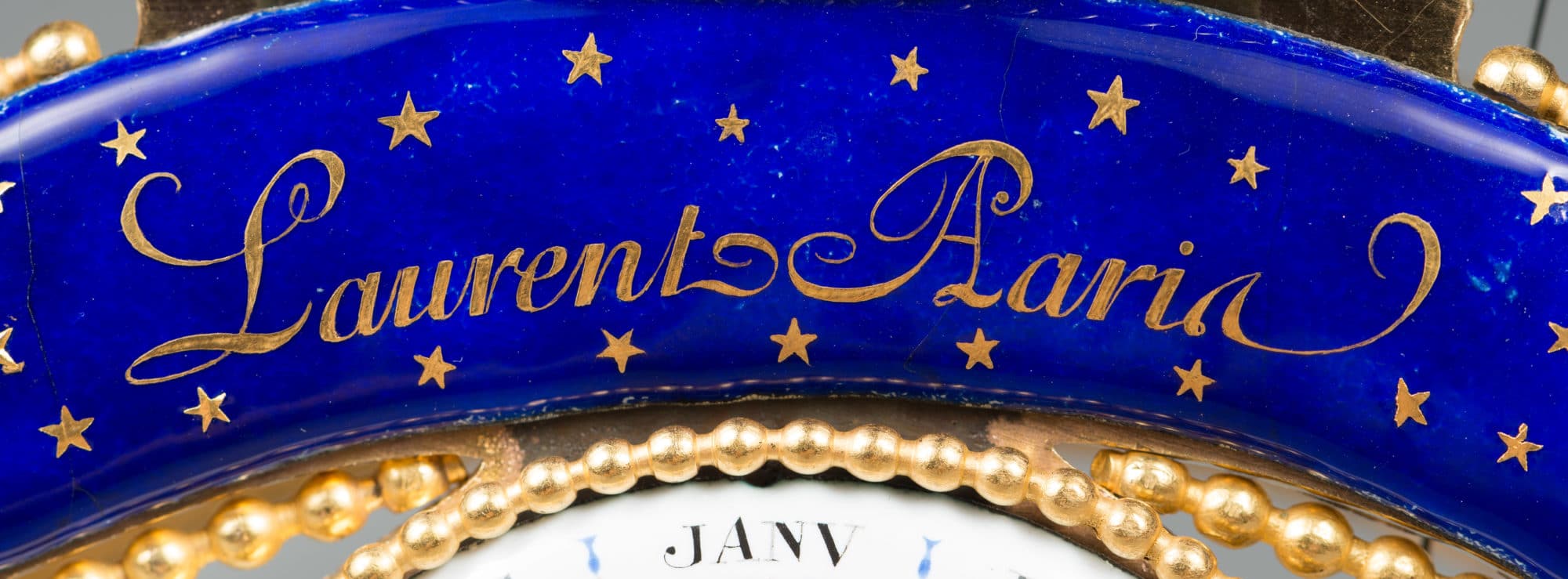
Paris, Louis XVI period, circa 1793-94
Height 41 cm, width 27 cm, depth 14 cm
A late Louis XVI three-dialled gilt bronze-mounted enamel and white marble eight day going skeleton clock, signed Laurent à Paris on the arch below the main dial. The main white enamel ring dial, with gilt bronze beaded bezel, has black Arabic numerals for the hours and minutes, outer red Arabic numerals for the date, and the Revolutionary days of the week painted in red enamel along the inside edge; fine pierced gilt brass hands for the hours and minutes and plain blued steel pointers for the seconds and the date. The skeletonised movement, visible through the cutout portion of the dial, has a small Graham escapement, knife-edge suspension, striking on the hour and half hour on a single bell, with outside count wheel. Above the main dial, a subsidiary dial indicates the moon phases and age, with a finely painted on enamel moon against a starry blue sky and a sector numbered from 1 to 29 ½ in blue for the days of the lunar month. Below the blue enamel arch, a white enamel subsidiary ring dial indicates the months of the Gregorian calendar in black and the Revolutionary calendar in red. The arched frame, with star-studded blue enamel decorative plaques, rests on four flattened bun feet; the rectangular white marble base is adorned with gilt bronze beading and a pierced leaf and berry frieze on all four sides. The whole reposes on four toupie feet.
Discover our entire collection of antique skeleton clocks for sale online or at the gallery.
Similar skeleton clocks are illustrated in Pierre Kjellberg, Encyclopédie de la Pendule Française du Moyen Age au XXe Siècle, 1997, p. 319, pl. C and G. A comparable clock, with Revolutionary calendar, is in the Carnavalet Museum in Paris; another similar model, signed “Ridel à Paris”, is in the François Duesberg Museum in Mons, Belgium.
Skeletonised clocks, in which the movement is showcased rather than being hidden, came into fashion toward the end of Louis XVI’s reign. Several explanations may be advanced for this: first, the technical advances made during the 18th century, which incited clockmakers to put their movements on display and made the public curious to discover them; and secondly, the preference for less massive, more delicate, clock cases, in marked contrast to the Louis XV and early Louis XVI styles. The ethereal appearance of these clocks was heightened by the use of painted polychrome enamel plaques instead of chased bronze work to decorate the clocks.
